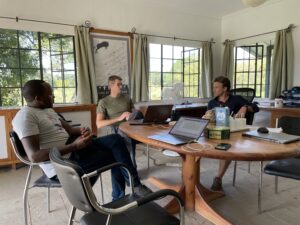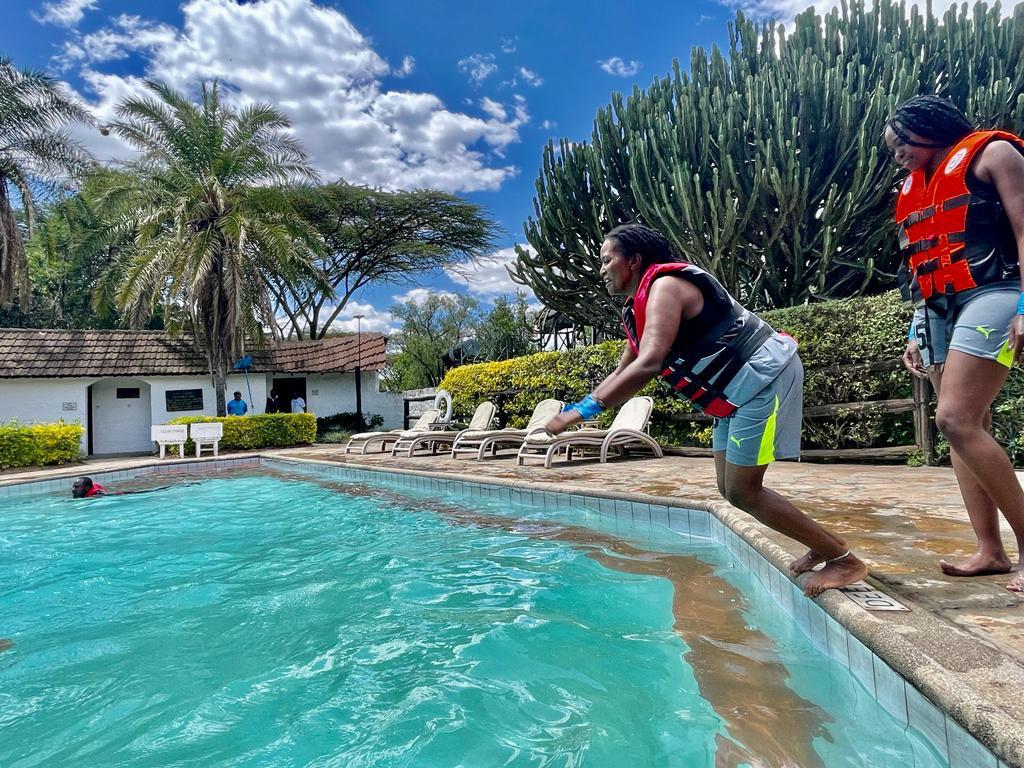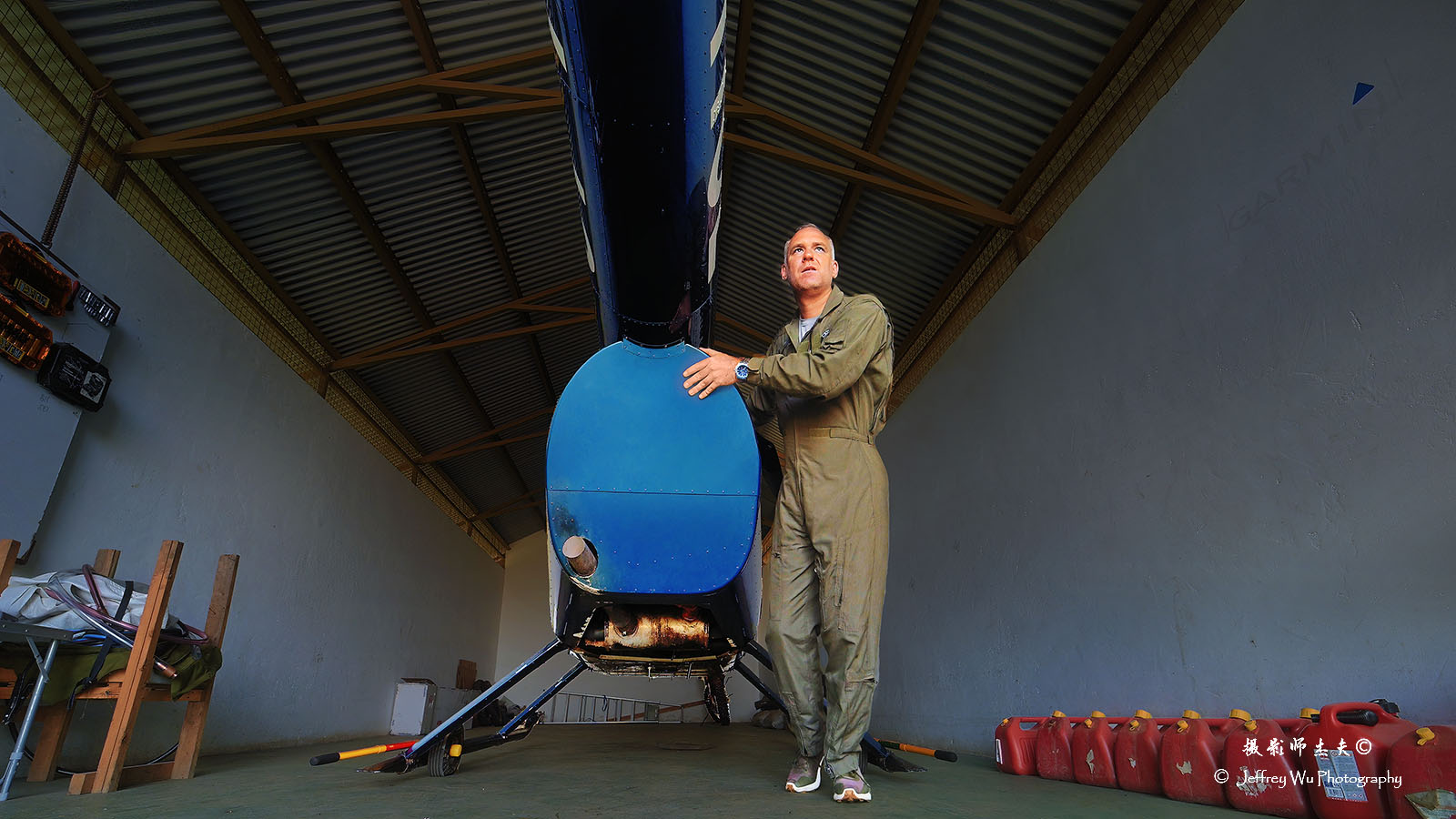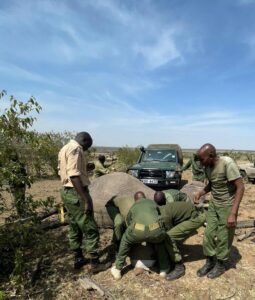 In February, while monitoring elephants, the MEP mobile ranger team noted a female that appeared to have an injury on her side. After consulting with the Kenya Wildlife Service (KWS) Vet Dr. Ndambiri from the Sheldrick Wildlife Trust (SWT) Mobile Vet Unit, a treatment operation was coordinated on February 26. This female was previously identified by MEP and is individual #201. The stomach injury, most likely a result of a spear, was treated in Naboisho Conservancy and she’ll continue to be closely monitored while she’s healing.
In February, while monitoring elephants, the MEP mobile ranger team noted a female that appeared to have an injury on her side. After consulting with the Kenya Wildlife Service (KWS) Vet Dr. Ndambiri from the Sheldrick Wildlife Trust (SWT) Mobile Vet Unit, a treatment operation was coordinated on February 26. This female was previously identified by MEP and is individual #201. The stomach injury, most likely a result of a spear, was treated in Naboisho Conservancy and she’ll continue to be closely monitored while she’s healing.
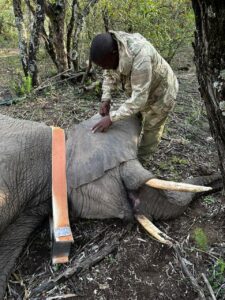 On February 9, alongside KWS Vet Dr. Ephantus Ndambiri, a bull elephant was fitted with a collar in the Olderkesi area in order to monitor his movements along the Sand River. The bull was named “Matumaini” or “Hope” in Kiswahili, the perfect name for him as he will give KWS, WRTI and MEP hope that we can protect this corridor. CEO Marc Goss piloted the MEP helicopter while the MEP mobile ranger team was on the ground. They’d spent a month scouting for this elephant through tough terrain, and he was found inside an area with dense brush. Thanks to everyone’s efforts, the collaring operation was a success, and we can now track this elephant’s movements alongside our partners to increase protection for him, the community and the place they both call home.
On February 9, alongside KWS Vet Dr. Ephantus Ndambiri, a bull elephant was fitted with a collar in the Olderkesi area in order to monitor his movements along the Sand River. The bull was named “Matumaini” or “Hope” in Kiswahili, the perfect name for him as he will give KWS, WRTI and MEP hope that we can protect this corridor. CEO Marc Goss piloted the MEP helicopter while the MEP mobile ranger team was on the ground. They’d spent a month scouting for this elephant through tough terrain, and he was found inside an area with dense brush. Thanks to everyone’s efforts, the collaring operation was a success, and we can now track this elephant’s movements alongside our partners to increase protection for him, the community and the place they both call home.
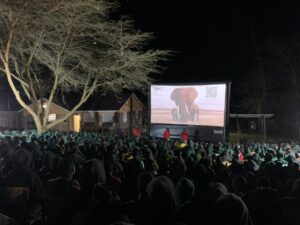 The Elephant Queen outreach team brought the movie and play to audiences in the Mara in February. MEP Assistant Senior Warden Jackson Maitai participated in the discussion with both adults and children alike.
The Elephant Queen outreach team brought the movie and play to audiences in the Mara in February. MEP Assistant Senior Warden Jackson Maitai participated in the discussion with both adults and children alike.
Over one day in February, MEP’s mobile, echo and foxtrot ranger teams all removed snares in their various areas of operation. Our community rangers are committed to wildlife protection.
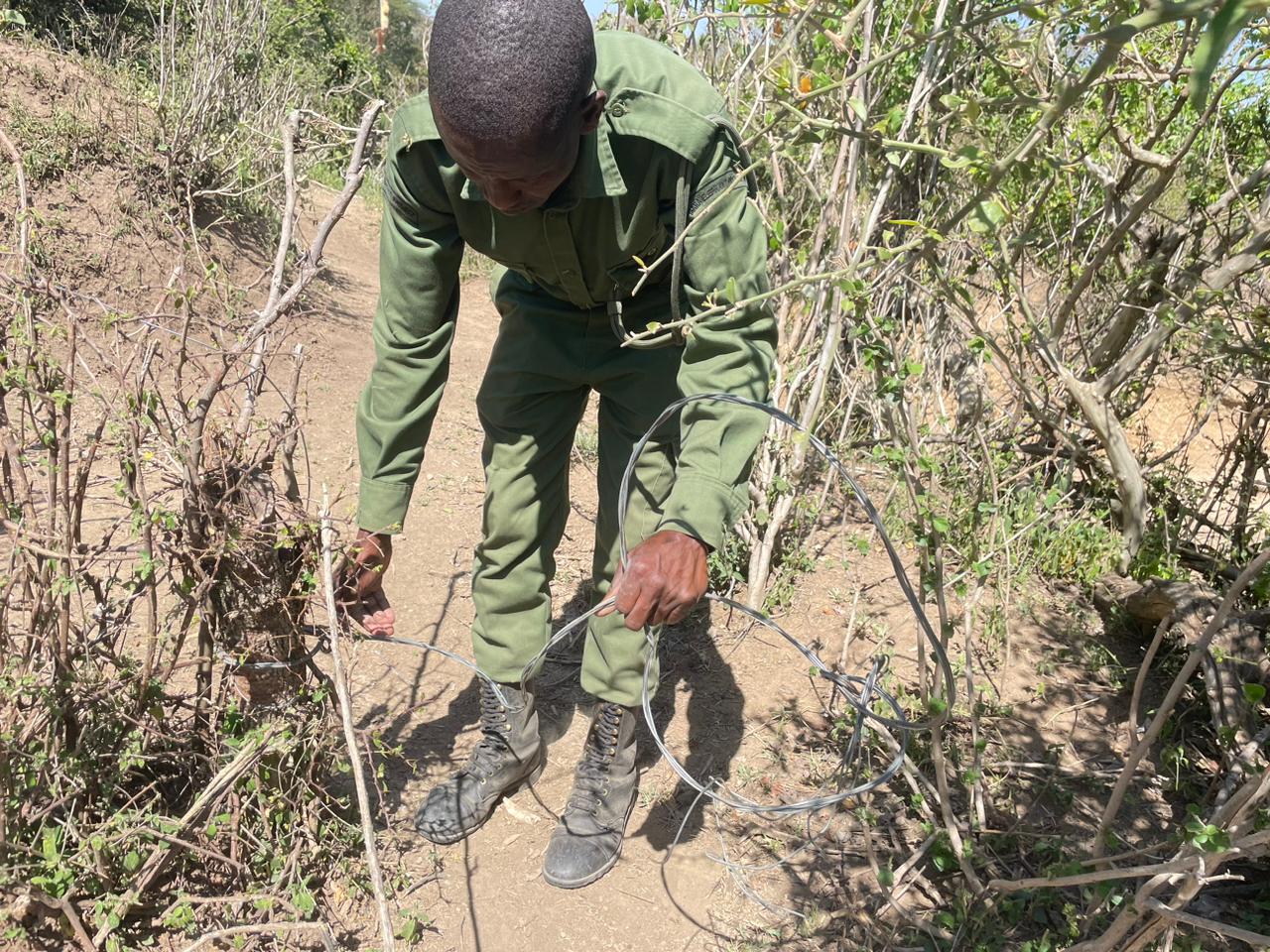
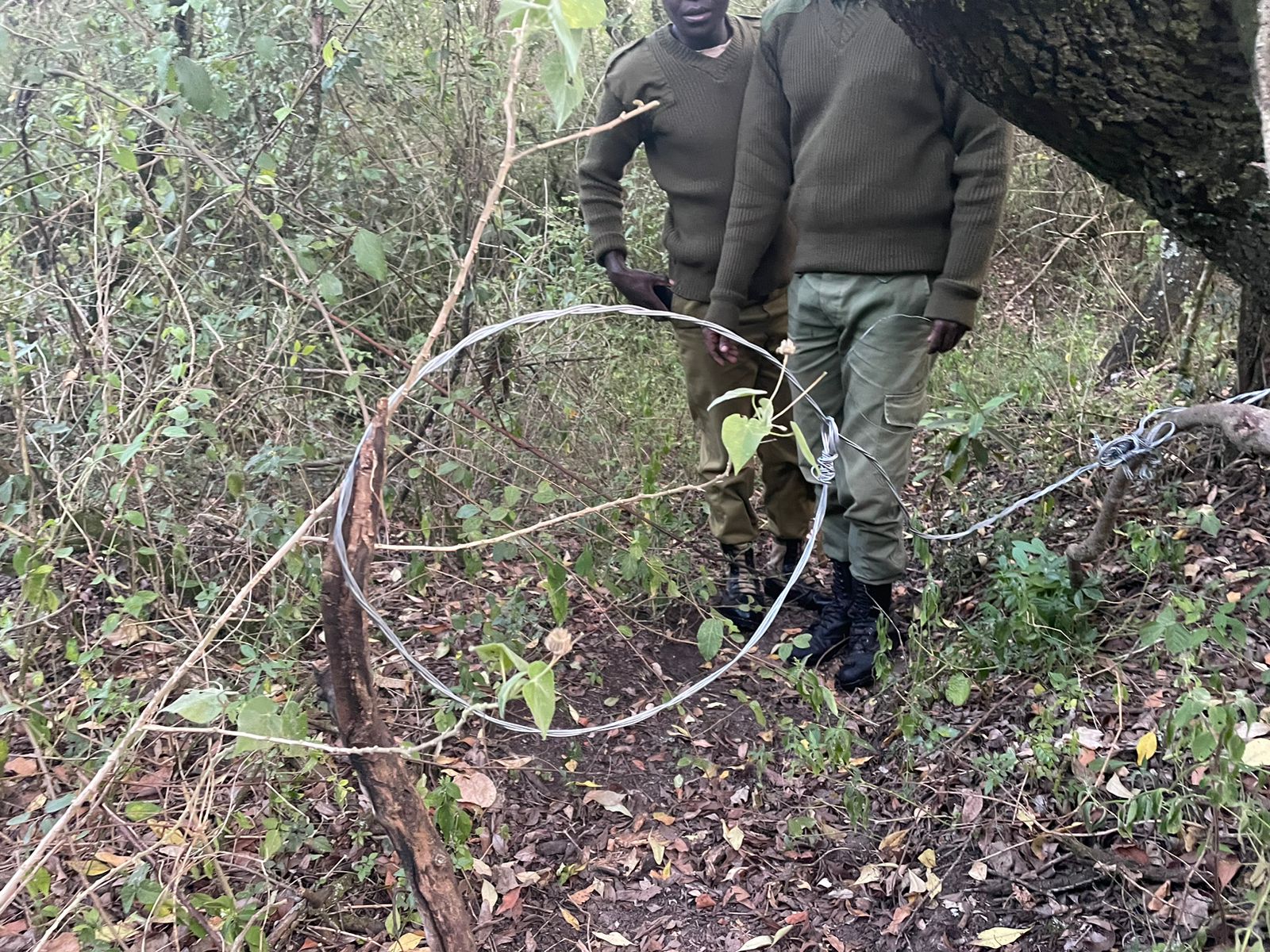
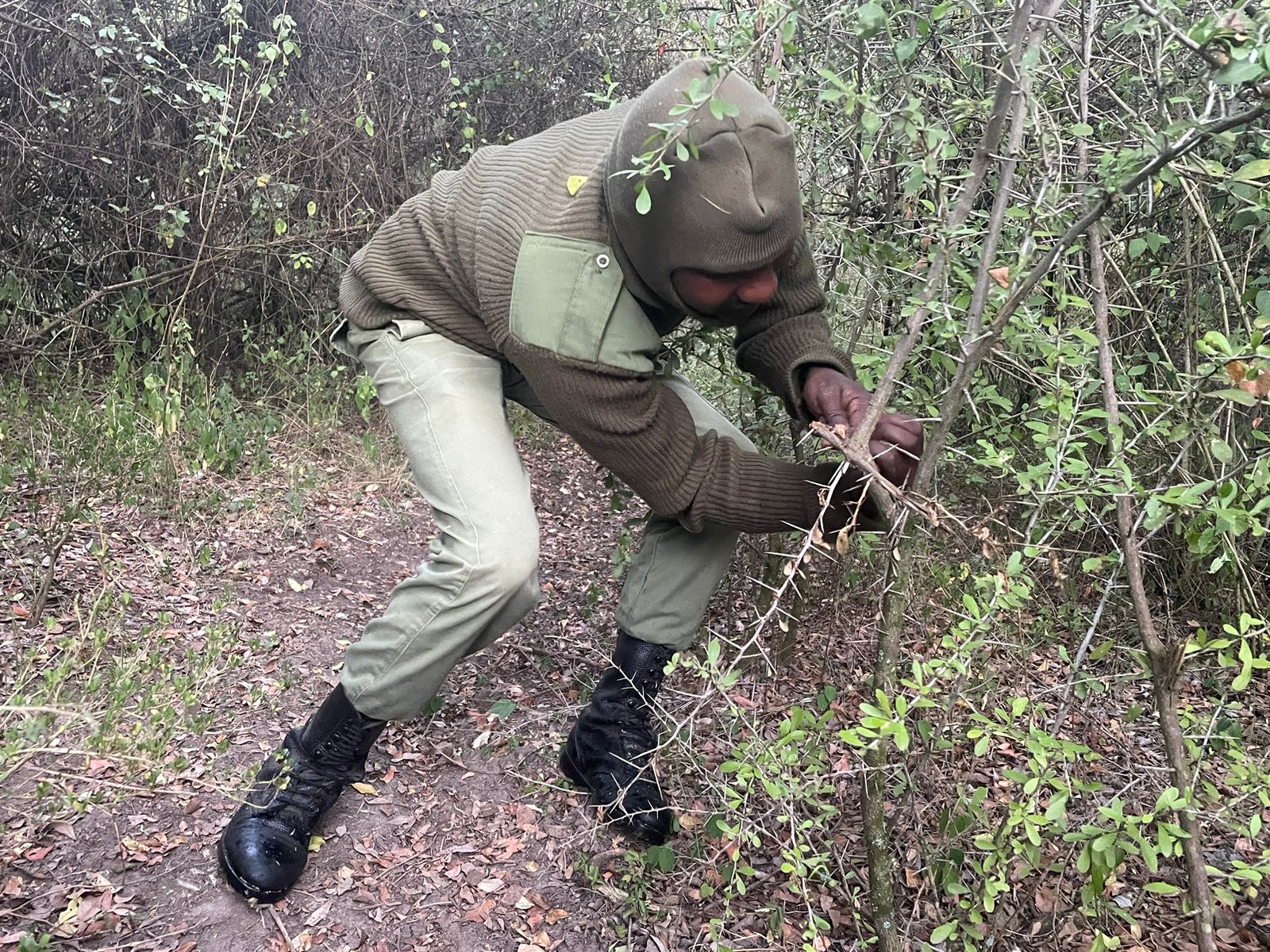
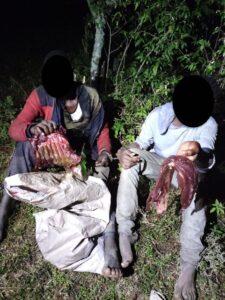 On February 25, the MEP “Foxtrot” ranger team joined KWS and Enonkishu Conservancy rangers to set up an ambush to catch bushmeat poachers. They successfully arrested two suspects, confiscated nine arrows, two bows, 11 snares and 5 kg of bushmeat.
On February 25, the MEP “Foxtrot” ranger team joined KWS and Enonkishu Conservancy rangers to set up an ambush to catch bushmeat poachers. They successfully arrested two suspects, confiscated nine arrows, two bows, 11 snares and 5 kg of bushmeat.
During the first of February, fires broke out in the Mau and Loita forests. The two MEP/SWT Trust Mau De-Snaring Units joined the community to combat the fire that consumed 70-80 hectares. They were able to create a fire line to stop its progress and nightly rains helped extinguish the bulk of the fire. Meanwhile, the “Bravo” team in the Loita Forest was doing the same. The MEP helicopter was called in to assess the damage and Kenya Forest Service joined. Nightly rain helped the team, and luckily, five days after it started, the fire was out.
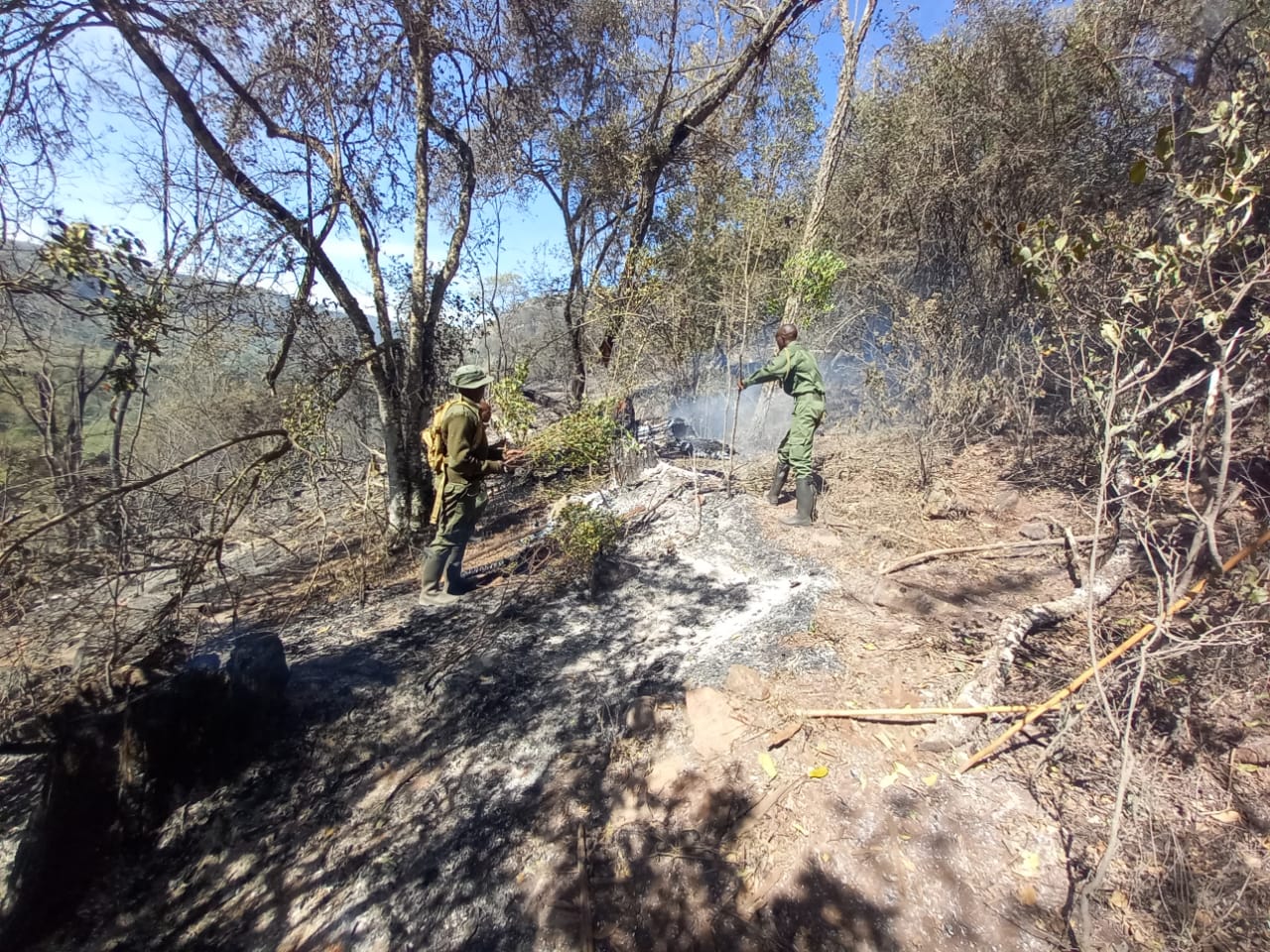
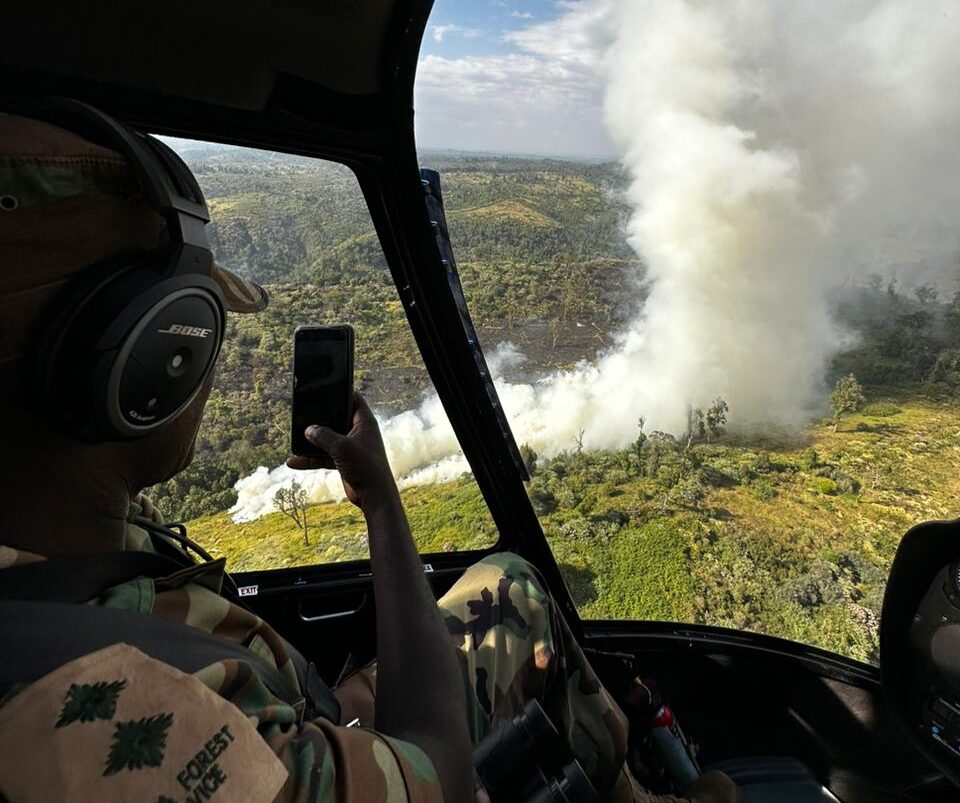

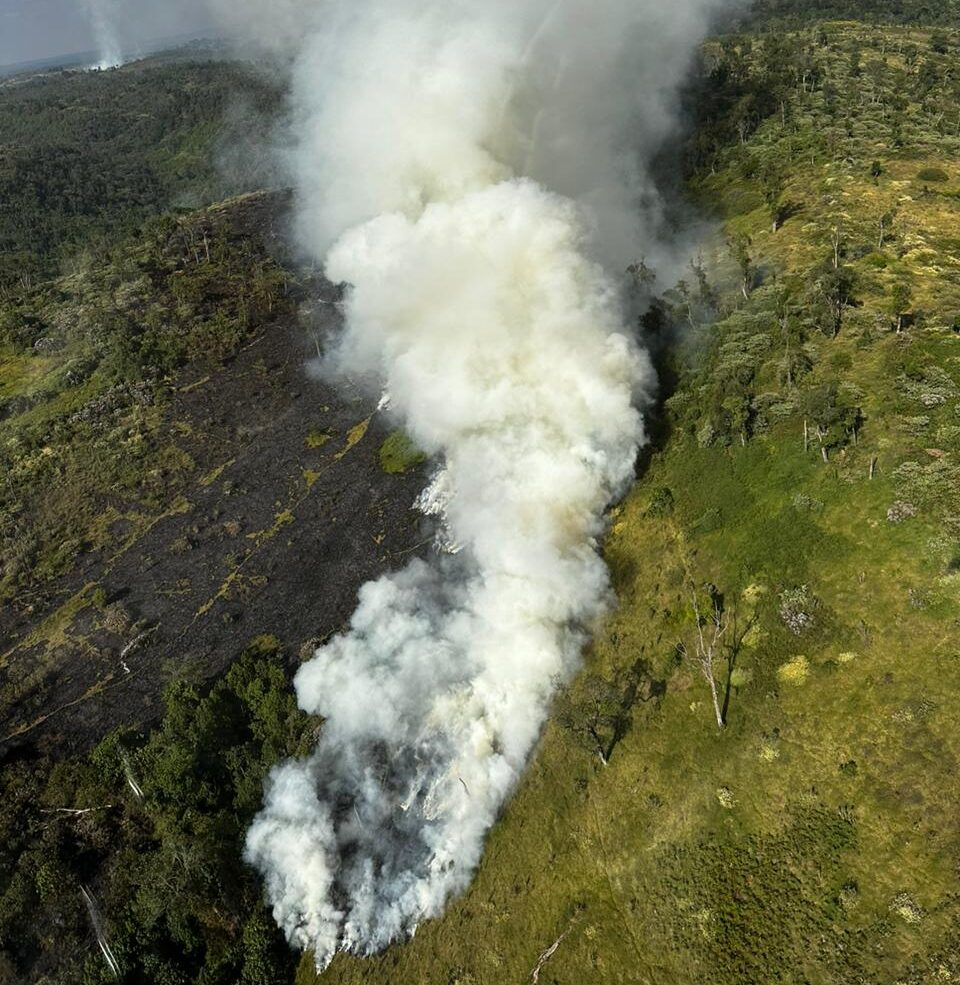
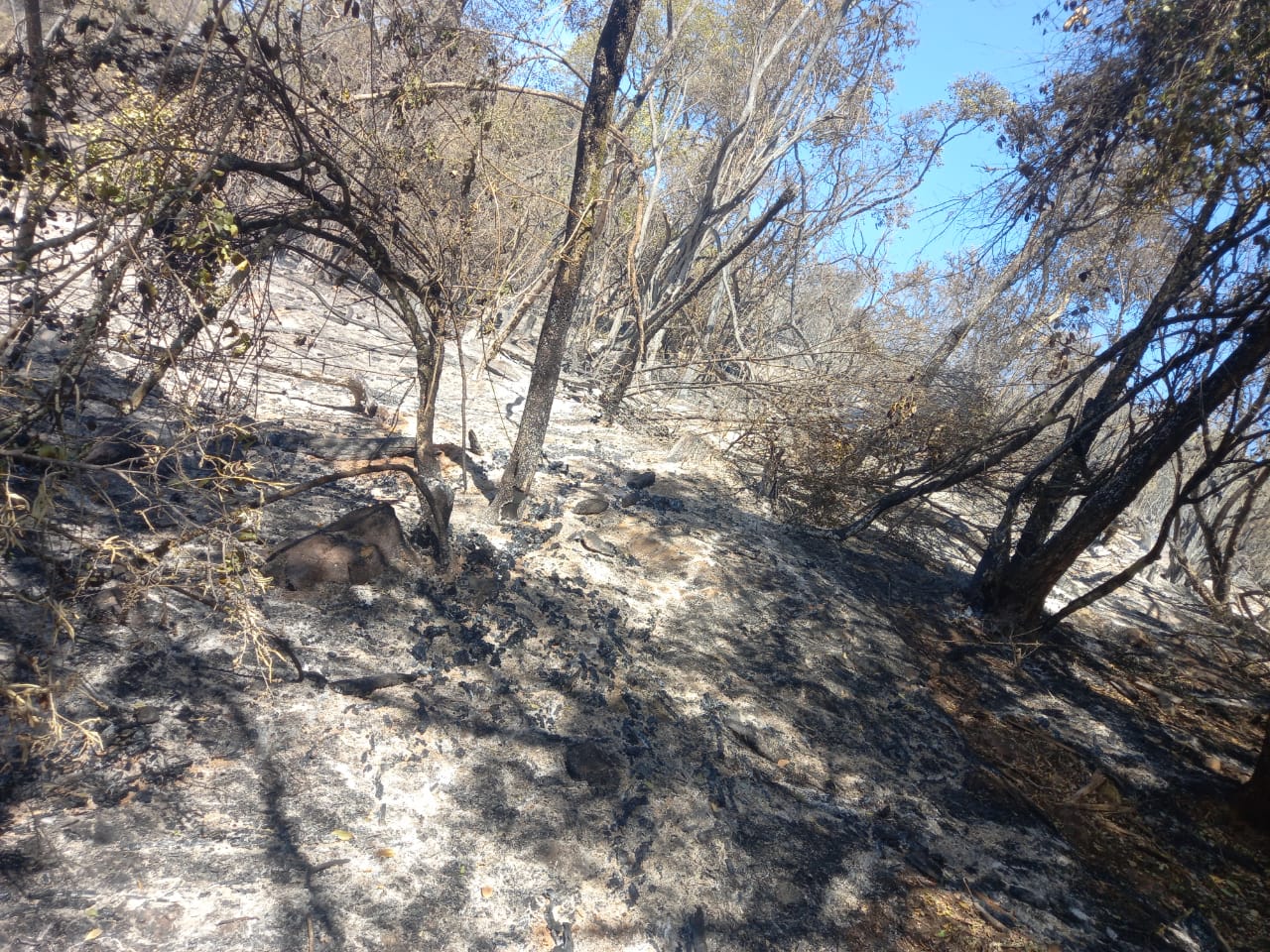
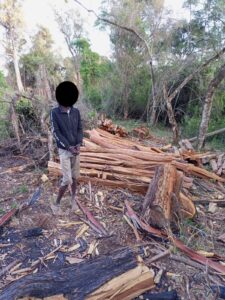 The MEP “Kilo” ranger team is the most recent team to be deployed to increase protection of the Loita Forest. In late February, they discovered 500 posts logged from the forest inside a fence and joined the MEP “Bravo” team and government partners to set up an ambush to arrest the culprit. It took several days of patience, but the ambush was finally successful, and they arrested one suspect and booked him at the nearby police station.
The MEP “Kilo” ranger team is the most recent team to be deployed to increase protection of the Loita Forest. In late February, they discovered 500 posts logged from the forest inside a fence and joined the MEP “Bravo” team and government partners to set up an ambush to arrest the culprit. It took several days of patience, but the ambush was finally successful, and they arrested one suspect and booked him at the nearby police station.
On February 8, a herd of elephants was trapped inside fences within community land. While elephants can easily move through fences, they are sometimes hesitant especially with young calves in tow. The MEP “Foxtrot” ranger team responded to push the elephants out of the fences, and spent all day trying to move them out, and weren’t able to convince them from the ground. That’s when the MEP helicopter was called in as a last resort to push them through the fences and back into the safety of a conservancy. MEP rangers joined by our Senior Warden coordinated the effort from the ground while CEO Marc Goss was in the air. He successfully moved the first group of elephants through the fence and back to safety, then had to go back for a mom and two calves. It was amazing to see the mom navigate her family along the same path the other elephants had taken ensuring they were joined together again. While the helicopter is always our last resort, it’s an important tool used alongside our rangers on the ground to rapidly respond to situations where elephants and people meet.

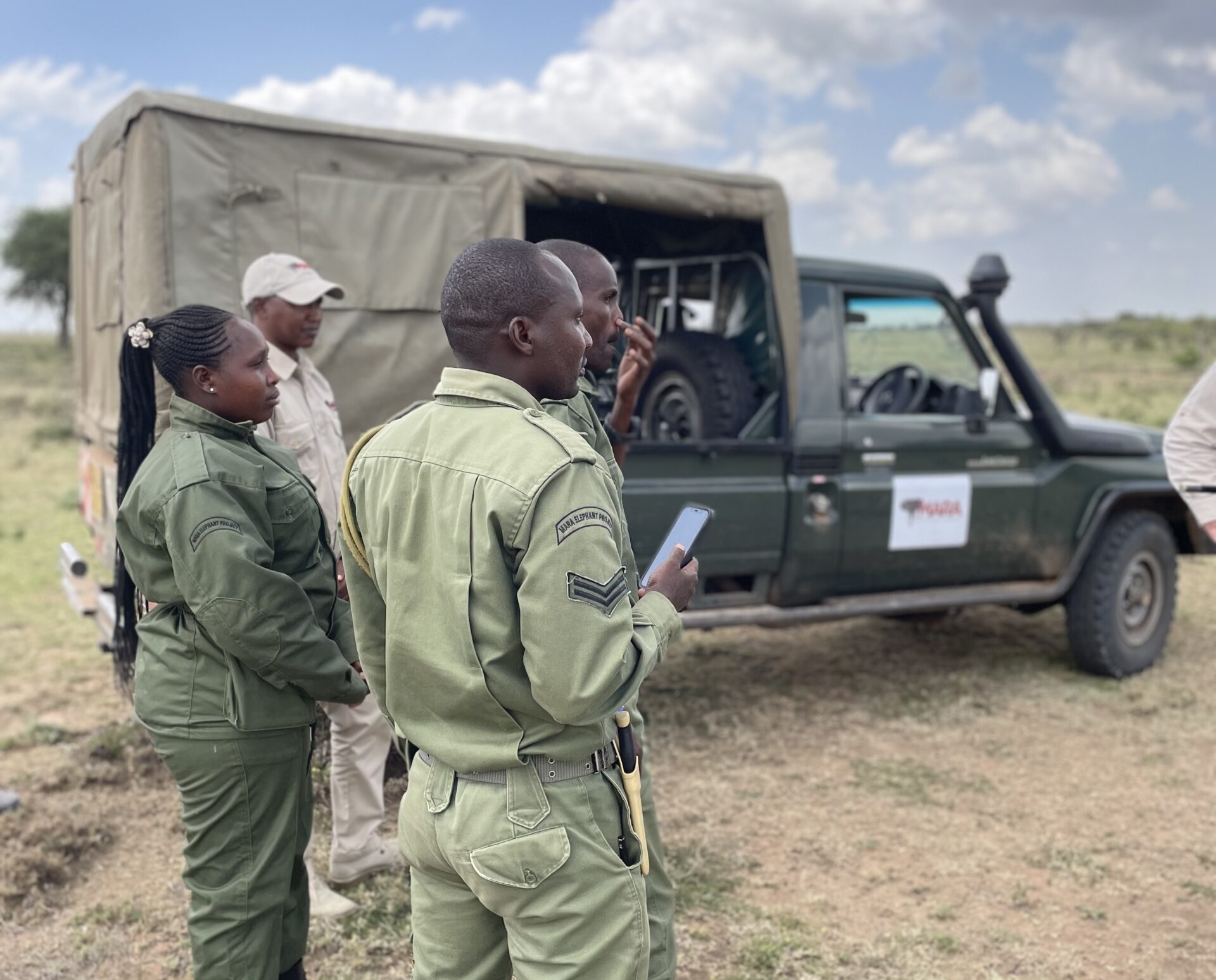
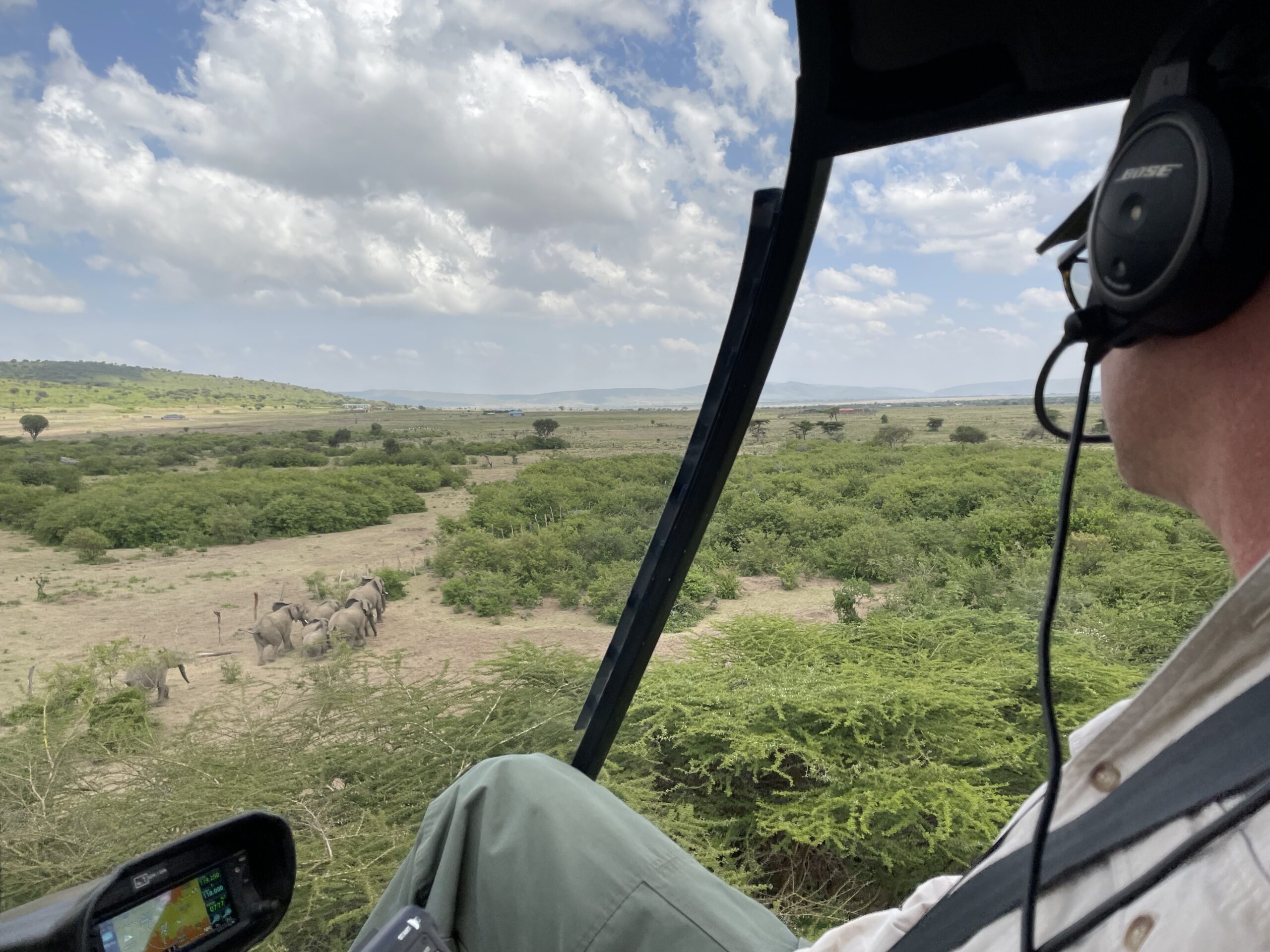



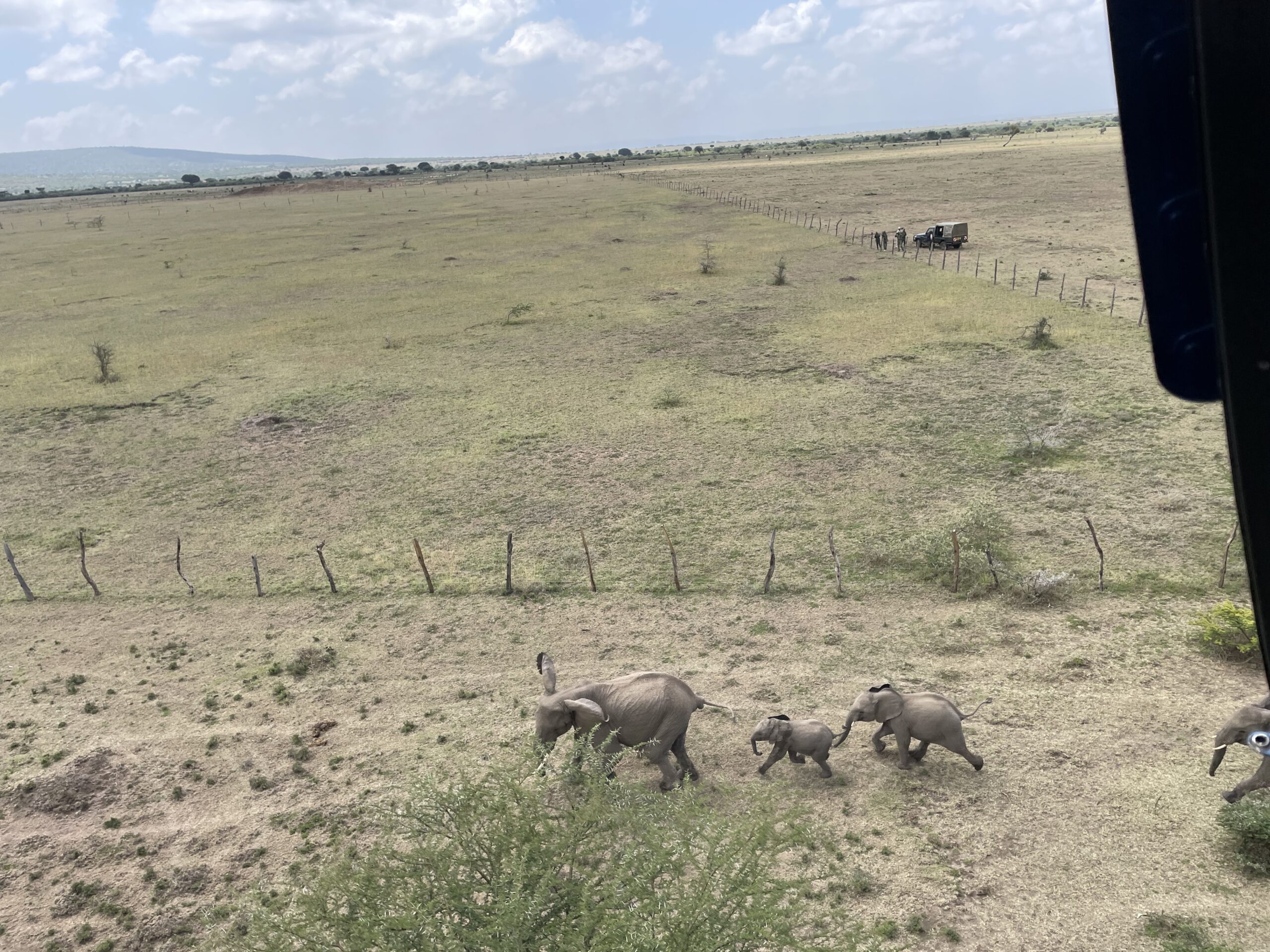
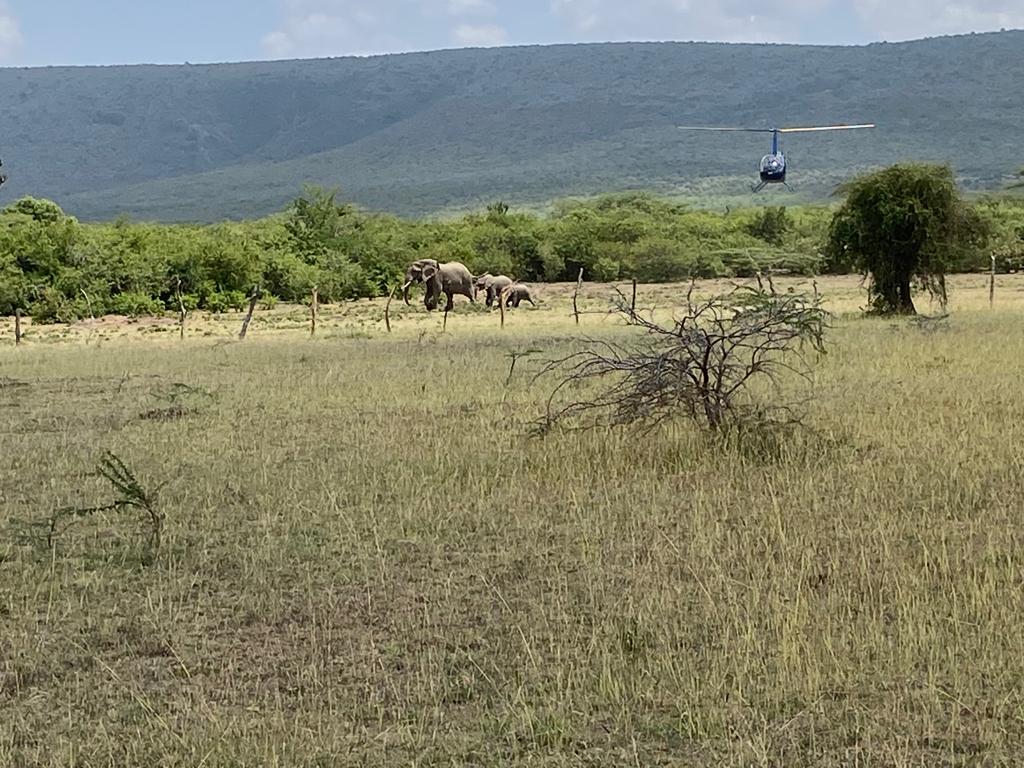
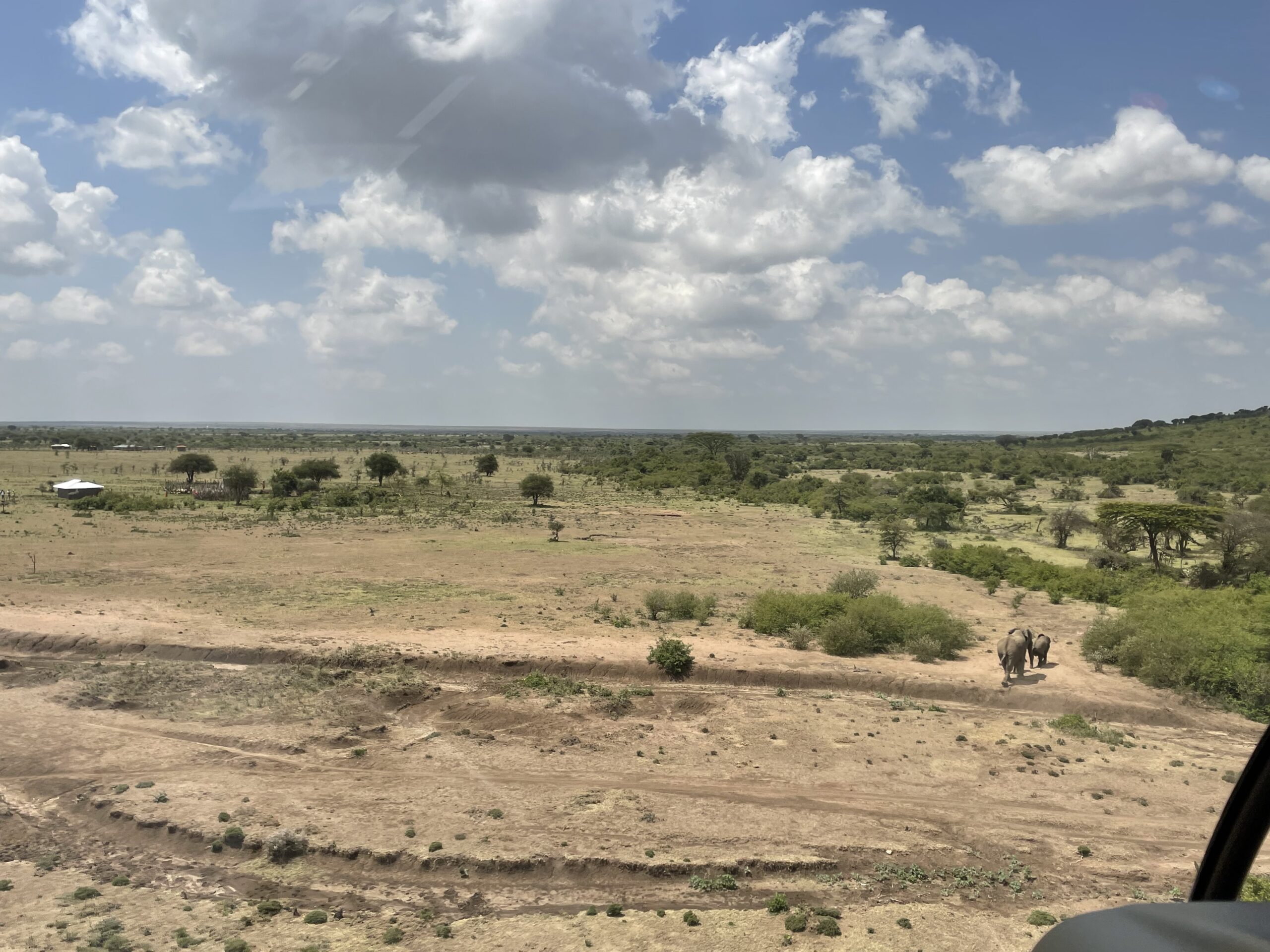
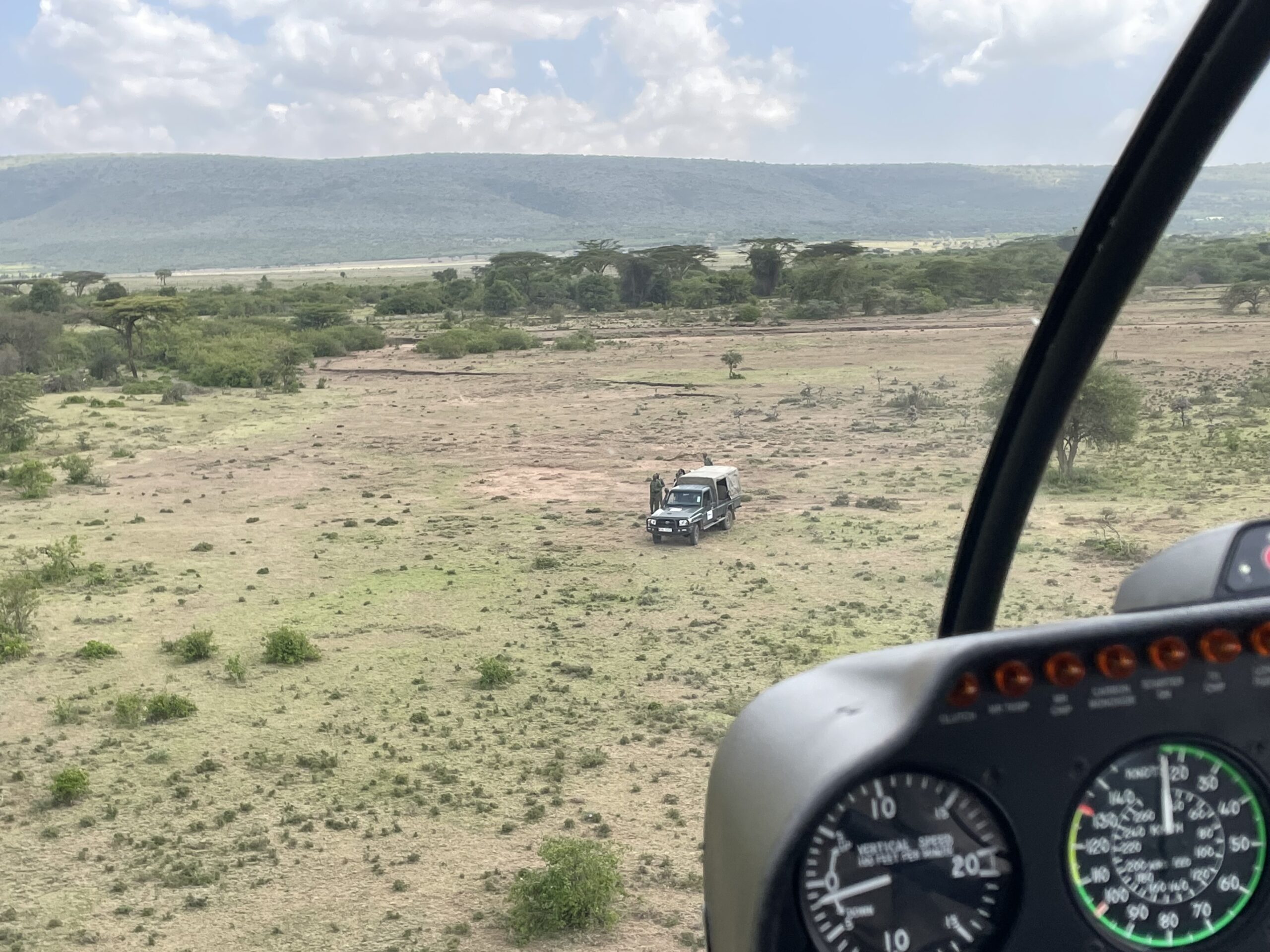
Amboseli and the Maasai Mara might feel like different worlds, but they are part of the same connected savanna system. So, it makes complete sense for Big Life to connect as meaningfully as possible with MEP. These new technologies, many of which are being pioneered by MEP, present exciting possibilities for how we manage the huge amounts of data coming in from the field in Amboseli. Better still, by using shared tools we can more easily share information and coordinate the work we all do across this huge landscape.
Big Life Head of Conservation Communication and Science Jeremy Goss
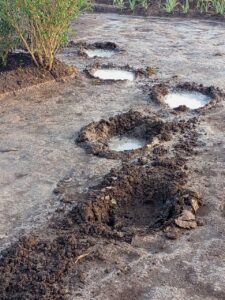 In February, elephants visited the MEP Co-Existence Farm twice, and the second group of 13 elephants accompanied by five calves not only ate crops but also destroyed structures on the farm.
In February, elephants visited the MEP Co-Existence Farm twice, and the second group of 13 elephants accompanied by five calves not only ate crops but also destroyed structures on the farm.
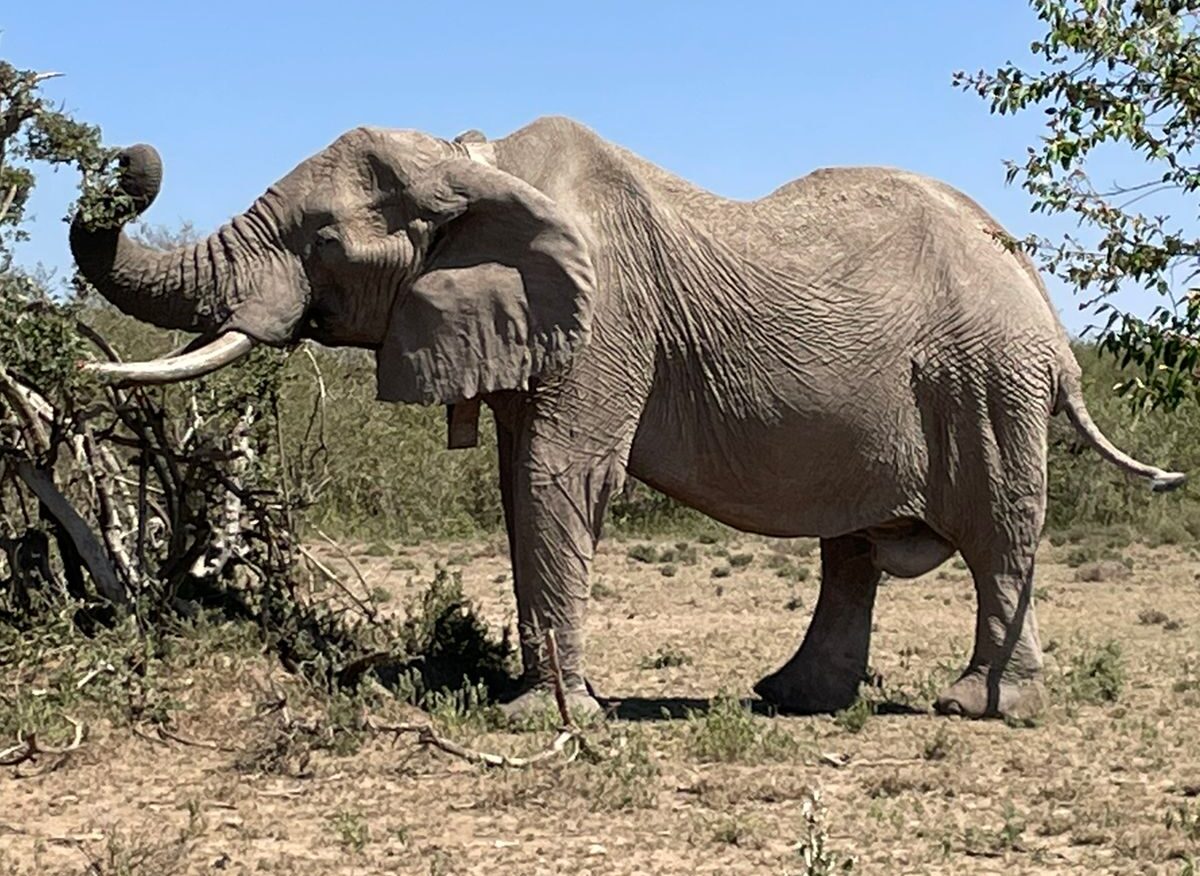


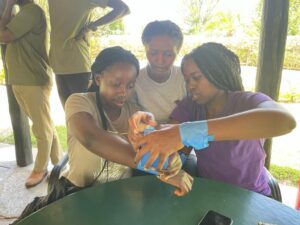 Mara Elephant Project acts as first responders to both the people and wildlife in the ecosystem, both on land and, sometimes, in the water. Many of MEP’s community rangers and researchers operate near water and in February, they had the opportunity to participate in a Waterborne Assisted Recovery Training given by Focused Conservation. The one-day course covered search and rescue procedures and water safety. Thank you to Focused Conservation for conducting the training and the Mara River Lodge for the use of their pool. All MEP staff graduated with their water safety certificate.
Mara Elephant Project acts as first responders to both the people and wildlife in the ecosystem, both on land and, sometimes, in the water. Many of MEP’s community rangers and researchers operate near water and in February, they had the opportunity to participate in a Waterborne Assisted Recovery Training given by Focused Conservation. The one-day course covered search and rescue procedures and water safety. Thank you to Focused Conservation for conducting the training and the Mara River Lodge for the use of their pool. All MEP staff graduated with their water safety certificate.
It was one of the more exciting trainings I’ve done at MEP. I learned a lot and had fun, kayaking for search and rescue, water safety procedures and much more. I’m glad I got the opportunity to do it.
MEP Research Assistant Caroline Kagume
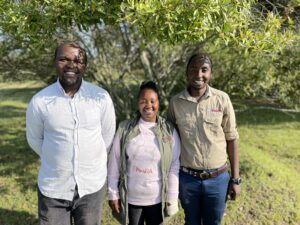 Dibblex Lesalon from Boots on the Ground Podcast joined us at MEP headquarters in February to interview Conservation Officer Wilson Sairowua and the head of our co-existence department Abigael Pertet for two upcoming episodes. The podcast aims to amplify voices for conservation and their episodes, both airing in March, will center around MEP’s community approach to conservation.
Dibblex Lesalon from Boots on the Ground Podcast joined us at MEP headquarters in February to interview Conservation Officer Wilson Sairowua and the head of our co-existence department Abigael Pertet for two upcoming episodes. The podcast aims to amplify voices for conservation and their episodes, both airing in March, will center around MEP’s community approach to conservation.
Finally, MEP wanted to thank Tutima, a German watch brand known for high-end durable watches perfect for adventure. Tutima is supporting MEP and featuring CEO Marc Goss in their ad campaigns shot by MEP Image Ambassador Jeffrey Wu.

